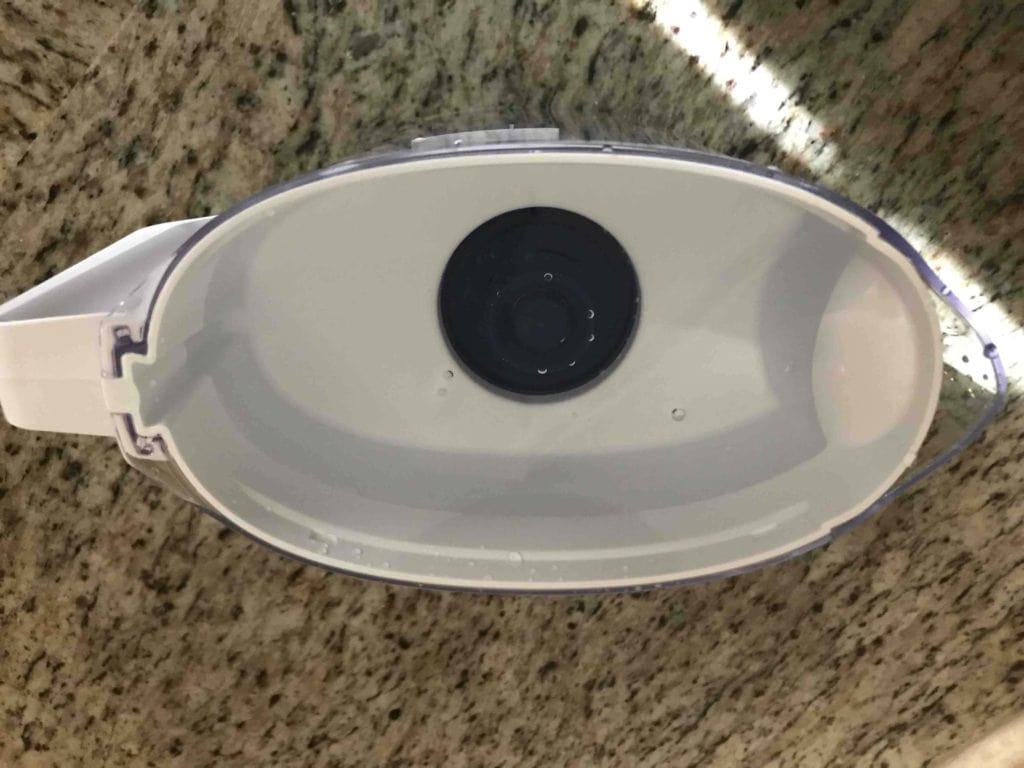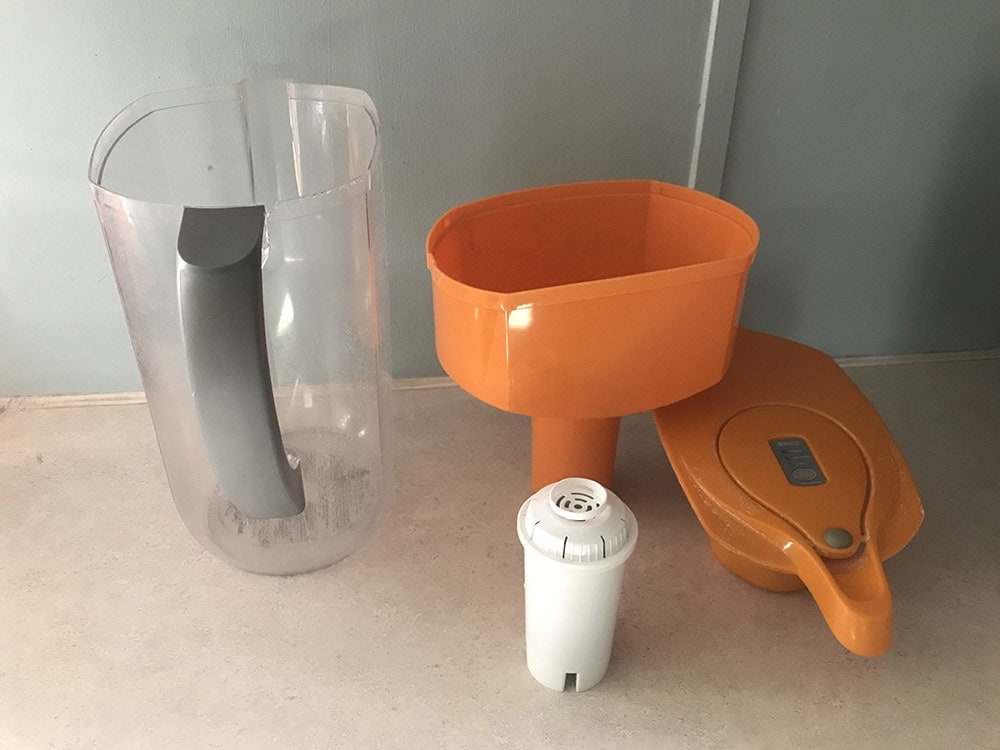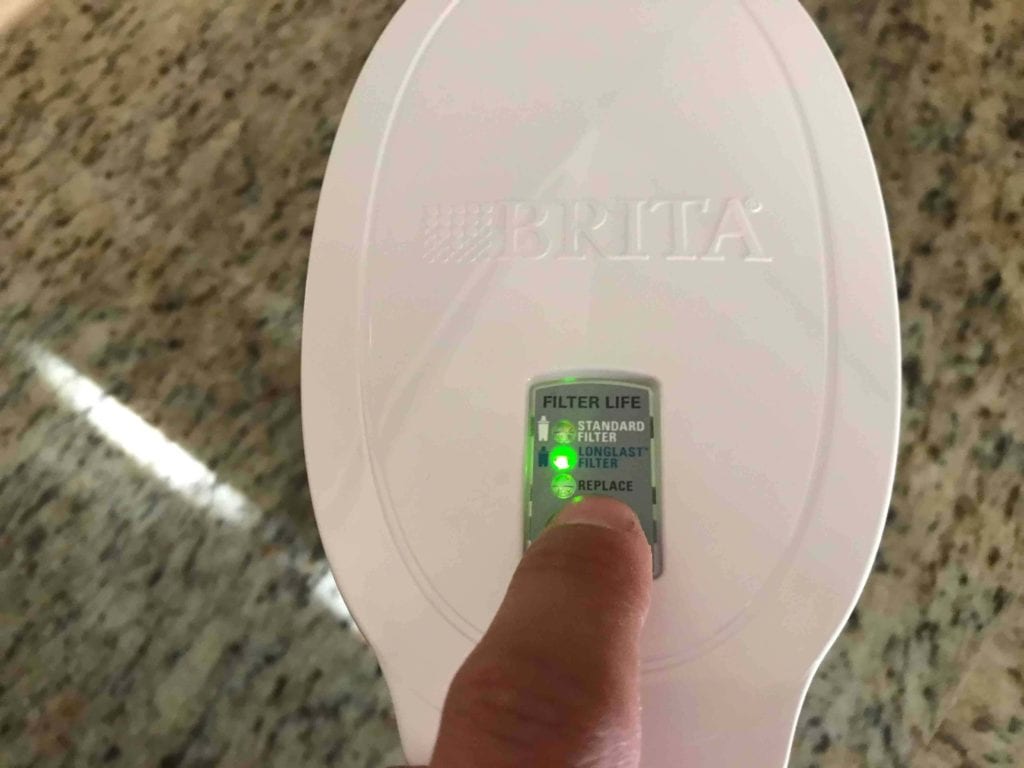When to Change a Brita Filter? Signs, Facts & FAQ
-

- Last updated:

Brita water filters are great for removing contaminants from everyday tap water. Many of us use filters to get clean drinking water, but as we all know, it’s important to change the filter regularly to ensure that it continues to do its job. But how often should you change a Brita filter? And are there any signs to look out for? Let’s discuss.
The frequency at which you change the Brita water filter will depend on the filter model that you have. For example, smaller filters may need to be changed every two months, while other filters may last up to three for four months, depending on your usage amount.
So, on average, a 2-4 month change interval is the norm with these filters. The change frequency will also depend on your usage levels, which can vary by household. Many Brita filters will typically last for about 40 gallons—though the Brita Longlast filter can last for up to 120 gallons.
The 5 Signs That You Need to Replace Your Brita Filter
Most Brita filters come with an electronic filter change indicator in the form of an LED light. The light will flash or change colors when your filter needs to be changed. However, if you’ve had your filter for a long time, you know that these indicators can become faulty at some point, leaving you to create a timeline based on your normal usage to determine when to change the filter—or simply change the filter on a schedule. However, there are also a few things to look for that may suggest that it’s time to change the filter.
1. The Light Indicator Is Red
All Brita filters come with a built-in light indicator that tells you when it’s time to replace the filter. This takes the guesswork out of trying to determine whether or not you’ve maxed out its filtering properties.
2. You See Black Flakes in the Water
Over time, you may notice black flakes floating inside of your water pitcher. This is common when the filter is changed irregularly, the housing isn’t cleaned properly, and/or you have a high amount of organic matter in your tap water.
This is why it’s important to change the filter regulator, as well as clean the housing around it. Unfiltered water is rich in various organic matter, that can lead to fungal growth within the filter. However, this can be eradicated by simply changing the filter and cleaning the pitcher and filter housing with diluted bleach.
3. There’s an Odor
If you notice any odor coming from the pitcher itself (such as that of rotten eggs or sulfur), or the water that you pour from the filter, chances are that it’s time to either change the filter or clean out the pitcher—or both. A viable filter will normally remove any organic matter from the water, but over time with continued use, the carbon granules will struggle to remove them, causing it to emit odors.
4. Water Has a Metallic Taste
One of the benefits of filtered water is that it tastes great, especially when compared to hard or tap water. However, if your filtered water source suddenly develops a metallic taste, then chances are it’s time to change the filter. This happens when the filter is no longer able to filter out minerals, such as magnesium and calcium, which can cause a scaly build up inside of the filter drum.
5. The Filter’s Slower Than Usual
The average gallon-sized Brita water filter will filter through a full pitcher of water in about 10 to 15 minutes. However, as the activated carbon within the filter absorbs organic matter, minerals, and molecules, they will adhere to the carbon itself, which then clogs and reduces its surface area.
As a result, the filter will function slower than it normally would. So, if your filter starts taking 30 minutes or more to filter a new pitcher of water, chances are it’s time for a replacement.
The 4 Most Common Contaminants Found In Tap Water
The Environmental Protection Agency (EPA) regulates the number of contaminants that can be present in local drinking water. And in most communities, locals get their drinking water from nearby rivers, lakes, and other close water sources.
Any source of natural water will contain a certain degree of contaminants, and contaminants can also come from water supply sources such as metal and PVC plumbing pipes. Brita filters are especially effective at removing lead and chlorine contaminants. But what are the most common contaminants found in water?
1. Arsenic
Arsenic is commonly found in groundwater, soil, and sediment. It typically enters drinking water through mineral deposits or hazardous waste products that make contact with local water sources. However, dangerous levels are usually filtered out before the water reaches your home. Arsenic is especially dangerous as it is odorless and hard to detect.
However, it can cause digestive problems, skin discoloration, and a variety of skin cancers when ingested. Brita water filters aren’t certified to reduce arsenic levels in drinking water, however, some of the filter models can remove a specific amount.

2. Fluoride
We often hear of fluoride as being one of the best minerals that you can use to keep our teeth healthy and white, and it’s a common mineral found in water. However, some water sources can have extremely high levels of fluoride, which can actually damage your tooth enamel.
It’s for this reason that water filters help to filter out high levels of the mineral to those that are safe for us to drink in large amounts. Brita filters don’t remove fluoride, but you can purchase a home filter if your tap water’s fluoride levels are higher than normal. However, a small amount of fluoride in drinking water isn’t harmful.
3. Nitrates
Nitrates are commonly found in fertilizer, liquid waste, plumbing systems, and septic tanks, making them a common contaminant in both rural and urban areas. Elevated nitrogen levels in water can also be caused by water runoff from plants and nearby fields.
Even a short-term exposure to water can raise nitrogen levels to dangerous concentrations in drinking water, which is why they’re usually filtered out before the water reaches your home. It’s worth noting that your average Brita filter does not remove nitrates. However, the Brita PRO Nitrate Platinum Series (a home filtering system) is certified to remove nitrates.
4. Microorganisms and Viruses
All freshwater sources will have a certain number of bacteria and microorganisms present in them. Many of these organisms are harmless, but others, such as Legionella, Pneumophila, and E. Coli can be dangerous.
However, it’sthe responsibility of state and local governments to filter water before it reaches homes, as many of these organisms can cause diseases and serious health issues. Brita water filters can remove some microorganisms present in tap water, though some filter models will remove more than others.
How to Change Brita Filters
Once you’ve decided to change your Brita water filter, simply pour out any existing water from the pitcher. Next, remove the filter from its housing—you may need to jiggle it a bit. Take your new filter and run it under cold water for about 15 to 20 seconds.
Next time, insert the new filter into the pitcher and ensure that you line the grooves up properly until it locks into place. Next, place the pitcher in the sink and turn on the cold tap water. Allow the pitcher to fill up completely, and then discard the water. Do this two or three more times to filter out any loose carbon dust from the new filter. After that, your new water filter will be ready to go!
How to Recycle Your Brita Filters
Don’t throw out that old filter just yet! Brita filters can be recycled for free. Simply go to Brita website and click on the recycling page to get a free shipping label. Once you receive the label in the mail, take your used filter (make sure that it’s dry) and place it inside a small bag, box it up, and mail it back to them.
Conclusion
On average, you will need to replace your Brita filter every two months or so, or when you reach the 40-gallon mark. Fortunately, Brita makes it easy to determine when it’s time to change a filter by equipping their filters with an electronic indicator.
However, if your indicator is no longer working, you may want to look for signs that your filter needs to be changed, such as black flakes in the water, water that suddenly tastes off-putting, or a foul odor coming from the pitcher itself.
- Related Read: 10 Best Cheap Water Filters: Reviews & Top Picks
- https://www.cdc.gov/healthywater/drinking/public/water_diseases.html
- https://www.sciencedirect.com/science/article/pii/S0013935117303419
- https://britapro.com/water-filtration/nitrate-removal-system/
- https://www.epa.gov/privatewells/potential-well-water-contaminants-and-their-impacts
- https://doh.wa.gov/community-and-environment/drinking-water/contaminants/coliform
Contents





